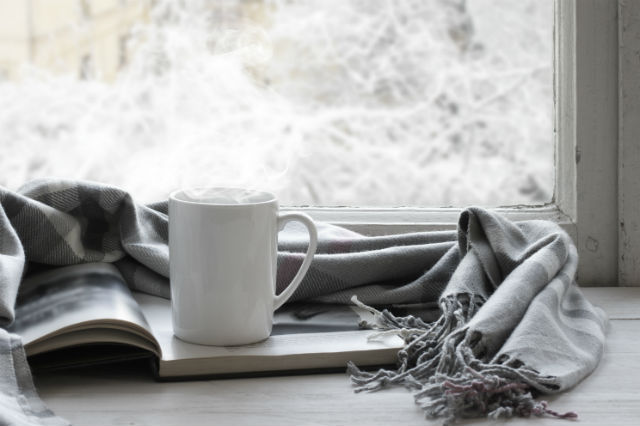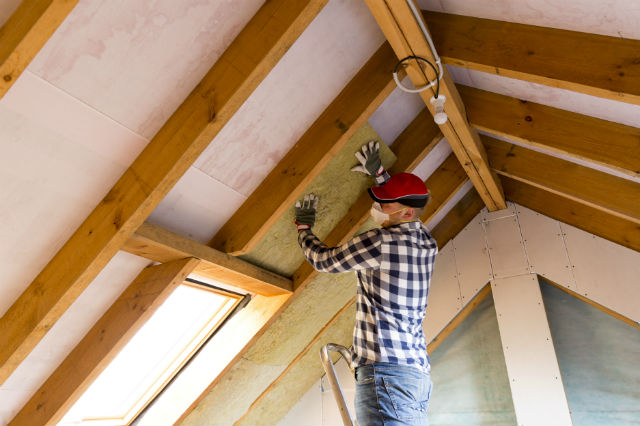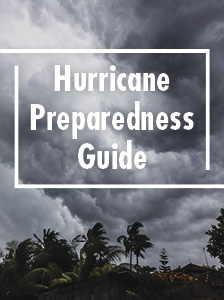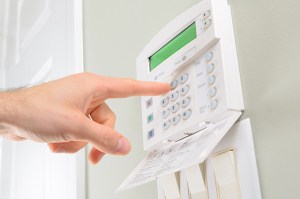Winter is coming, and with it, cold weather, snow and ice can wreak havoc on your house and property. Therefore, preparing your house for winter isn’t just a luxury but a necessity. Fortunately, there are a number of simple steps you can take to winterize your home that can help you remain safe and prevent costly repairs.
First, review your home insurance policy and speak to an agent to make sure that you are sufficiently protected from any concerning winter weather-related risks.
Check Your Insulation
The most critical component of winterizing your home is ensuring that the heat stays in and the cold stays out. Adding an extra layer of insulation to your walls, as well as attic floor and basement ceiling, can go a long way toward keeping your abode warm. You may also want to insulate your pipes and water heater to prevent freezing and improve energy efficiency.
But cold air can seep in — and warm air out — of even the smallest crevice, so pay particular attention to exterior doors and windows. Install door sweeps that attach to the bottom of the door to seal the gap between the door and the threshold. You can use caulk or weather strips around windows, chimneys or any place where two different materials meet.
For an added layer of cold-weather protection, storm windows not only improve insulation, newer models even reflect back some of the room’s heat. According to the U.S. Department of Energy, storm windows can reduce heat loss by approximately 10%-20%.
Heating Tips and Safety
All heating equipment, including stationary space heaters, water heaters and central heating equipment, should be installed by a qualified professional according to local codes and manufacturer’s instructions. Make sure fuel-burning equipment is vented to the outside to prevent carbon monoxide poisoning. If you smell gas, leave your house immediately and call the fire department or gas company.
Your fireplace should have a sturdy screen to prevent ashes from flying into the room. Once the fire is out, wait until the ashes are cool before putting them in a covered metal container (never use plastic).
Keep anything flammable at least three feet away from a heat source. Always turn off portable heaters when leaving the room or going to sleep. Test your smoke and carbon monoxide detectors monthly and have your fireplace and heating equipment cleaned and inspected every year.

Heating Oil and Propane Delivery
Winter is no time to be left without heating oil or propane, yet weather conditions often make delivery difficult. Some simple steps can make the process easier and safer. Make sure to clear all the snow and ice leading to and around your fuel pipe. This will not only help delivery of heating fuel or propane but also allow access should there be an emergency.
Snow must also be removed from around all exhaust vents as well as above your tanks. Accumulating snow can easily block vents and force carbon monoxide into the house or cause heating system malfunctions. Snow and ice above your tank could fall and damage equipment or cause spills.
Exterior Attention
The exterior of your house, as well as the rest of your property, also requires winterizing.
Before winter, gutters must be cleaned out to prevent ice damming and water buildup, both of which can lead to internal leaks.
All yard furniture and loose items should also be removed and stored away, as items like these can easily be dislodged and cause damage to your home or property during a storm. If you have the time and resources, creating a windbreak, such as a row of trees, fence or wall, can help block cold winter winds from reaching your house.
Be prepared for the first snowstorm of the year by ensuring your snowblower is working properly and snow shovels are available, as well as stocking up on snowmelt.
To prevent tree branches from snapping and falling under the weight of heavy snow – and potentially causing damage to your home or nearby property – use a mop or boom to knock off some of the accumulating snowfall.
Winterizing a Vacant Home
Many people travel or relocate in the winter, or conversely have a summer home they don’t use during the cold months. But even an empty house needs to be winterized in order to be properly prepared for the season.
Cold weather can easily freeze and damage your home’s pipes. Therefore, even if the house will be empty for an extended period of time, do not turn your thermostat off. The thermostat should be kept at the lowest temperature that will prevent your pipes from freezing, generally about 50 to 55 degrees.
When you winterize a vacant house, shut off the water at the main valve. Additionally, you should open all the faucets to allow water already in the pipes to drain out. You may need to call a professional plumber to assist in this. In addition to water, you’ll also want to shut down the gas line to prevent fires or explosions.
Other good safety tips include unplugging your home’s electronics and appliances to eliminate the chance of a fire (and lower your electric bill) and asking your neighbors to keep an eye on your home and inform you if anything seems awry.
Sometimes, despite the greatest of efforts to winterize your home, the weather is unpredictable and property damage happens. Think about if your home insurance is ready for the cold weather months ahead.
Speak to a AAA Insurance agent to learn more about home insurance coverage.
3 Thoughts on “How to Winterize Your Home”
Leave A Comment
Comments are subject to moderation and may or may not be published at the editor’s discretion. Only comments that are relevant to the article and add value to the Your AAA community will be considered. Comments may be edited for clarity and length.


















Thank you for sharing! A must-read article.
As for frozen pipes prevention, also use extra insulation in your basement and attic. The insulation will help to keep in heat and provide warmth to the pipes. Even if the attic or basement in your new home already has insulation, you may want to consider applying some extra insulation around problem areas for the winter months and place the insulation between the exterior wall and the pipe.
Re: Winterize a vacant home: consider using a non-toxic plumbing antifreeze for drains (ex: Cryo-tek, Recochem or other specifically for this application; Note NOT automotive antifreeze). This will protect p-traps and J-traps, etc.
Very good info. Also make arrangements to have sidewalks and driveways cleared of snow so the home looks occupied. Have some light timers in and out. Turn off ice maker. Stop paper and mail delivery.